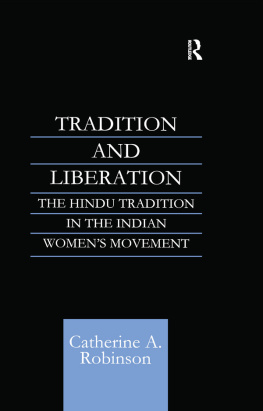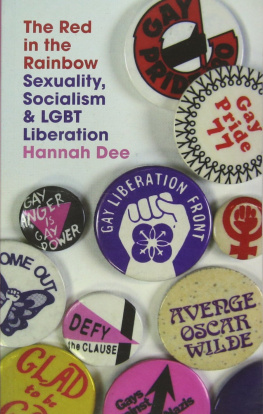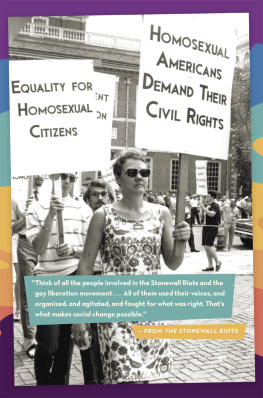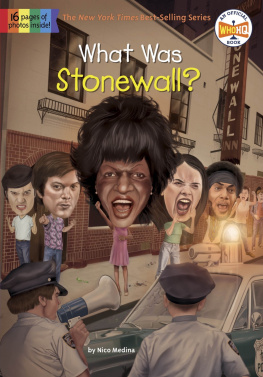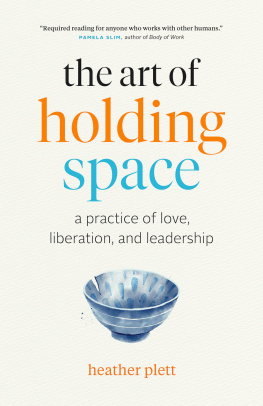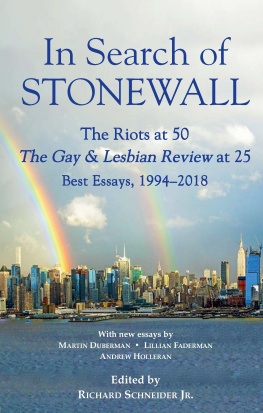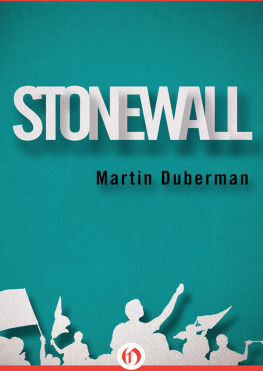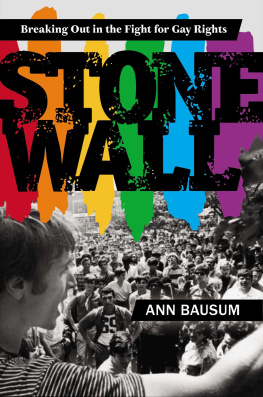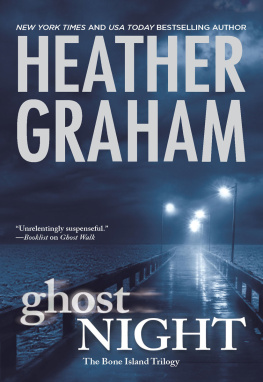Sean Heather K. McGraw - The Gay Liberation Movement: Before and After Stonewall
Here you can read online Sean Heather K. McGraw - The Gay Liberation Movement: Before and After Stonewall full text of the book (entire story) in english for free. Download pdf and epub, get meaning, cover and reviews about this ebook. year: 2018, publisher: RosenGroup, genre: Politics. Description of the work, (preface) as well as reviews are available. Best literature library LitArk.com created for fans of good reading and offers a wide selection of genres:
Romance novel
Science fiction
Adventure
Detective
Science
History
Home and family
Prose
Art
Politics
Computer
Non-fiction
Religion
Business
Children
Humor
Choose a favorite category and find really read worthwhile books. Enjoy immersion in the world of imagination, feel the emotions of the characters or learn something new for yourself, make an fascinating discovery.
- Book:The Gay Liberation Movement: Before and After Stonewall
- Author:
- Publisher:RosenGroup
- Genre:
- Year:2018
- Rating:5 / 5
- Favourites:Add to favourites
- Your mark:
- 100
- 1
- 2
- 3
- 4
- 5
The Gay Liberation Movement: Before and After Stonewall: summary, description and annotation
We offer to read an annotation, description, summary or preface (depends on what the author of the book "The Gay Liberation Movement: Before and After Stonewall" wrote himself). If you haven't found the necessary information about the book — write in the comments, we will try to find it.
The Gay Liberation Movement: Before and After Stonewall — read online for free the complete book (whole text) full work
Below is the text of the book, divided by pages. System saving the place of the last page read, allows you to conveniently read the book "The Gay Liberation Movement: Before and After Stonewall" online for free, without having to search again every time where you left off. Put a bookmark, and you can go to the page where you finished reading at any time.
Font size:
Interval:
Bookmark:



Thank you to Robert and Nanci McGraw, brothers Darrin and Gavin, and for Cris, Q. B., and Gary
Published in 2019 by The Rosen Publishing Group, Inc.
29 East 21st Street, New York, NY 10010
Copyright 2019 by The Rosen Publishing Group, Inc.
First Edition
All rights reserved. No part of this book may be reproduced in any form without permission in writing from the publisher, except by a reviewer.
Library of Congress Cataloging-in-Publication Data
Names: McGraw, Sean Heather K., author.
Title: The gay liberation movement : before and after Stonewall / Sean Heather K. McGraw.
Description: New York : Rosen Publishing, 2019. | Series: The history of the LGBTQ+ rights movement | Includes bibliographical references and index. | Audience: Grades 7-12.
Identifiers: LCCN 2017022203 | ISBN 9781538381342 (library bound) | ISBN 9781508183112 (pbk.)
Subjects: LCSH: Gay liberation movementUnited StatesHistoryJuvenile literature. | Gay rightsUnited StatesHistoryJuvenile literature. | Stonewall Riots, New York, N.Y., 1969Juvenile literature.
Classification: LCC HQ76.8.U5 M3949 2018 | DDC 323.3/2640973dc23
LC record available at https://lccn.loc.gov/2017022203
Manufactured in the United States of America
On the cover : The raid on New York Citys Stonewall Inn ignited riots on June 28, 1969 (top), and fueled a worldwide movement for gay rights and solidarity that would be seen in marches, such as this pride parade on Bostons Commonwealth Avenue in 1977 (bottom).
CHAPTER ONE
DENIAL AND ENTRAPMENT
CHAPTER TWO
COMPTONS, BLACK CAT, AND STONEWALL
CHAPTER THREE
AFTER STONEWALL
CHAPTER FOUR
MISOGYNY CAUSES ORGANIZATIONS TO RESTRUCTURE
CHAPTER FIVE
CREATING SPACES AND CHANGING INSTITUTIONS
CHAPTER SIX
CONSERVATIVE BACKLASH TAKES THE NATIONAL STAGE
CHAPTER SEVEN
THE END OF AN ERA

H omosexuals are coming together at last, stated a flyer created by the Mattachine Society of New York. This flyer was given to people at a rally in New York City on Sunday, July 27, 1969, one month after the Stonewall riots of June 28, 1969. These words sum up the trajectory of the LGBTQ+ movement after the riots.
The Stonewall riots have served as a dividing line in the history of the LGBTQ+ movement, dividing history neatly into the before and after. Yet these words were written by members of the Mattachine Society, a group of gay men led by Harry Hay. In 1950, nineteen years before the Stonewall riots, Hay had established the society to educate mainstream society about matters to do with gay men. They had already come together before Stonewall, in groups, bars, and homes. And they had already had conflict with local authorities, such as during the Black Cat Tavern riot in 1967.
And yet something was different about Stonewall. Part of that difference is made clear by examining the years immediately before and after it, around 1965 to 1980. These years spanned the height of the African American civil rights movement; the anticapitalist antiwar movement that ended US involvement in the Vietnam War; the womens liberation movement, and the student and counterculture movements. The protest methods, rhetoric, and liberation ideology for these movements were similar. Each wanted civil rights to be more inclusive of previously excluded populations, and each included the participants forming a core group identity for themselves. Each movement also built on the achievements and issues of the others. These years were crucial to the development of modern LGBTQ+ identity, culture, and legal status and have deeply influenced mainstream culture in many ways.

Seen here from left to right are Chuck Rowland, an unidentified man, Rudi Gernreich, Tony Reyes, and Don Slater. They were members of the Mattachine Society, the first American homophile group.
Many changes came about because of these events and the people involved in them. Along the way, there was much social and legal persecution against LGBTQ+ people. This persecution served as the basic why of the movement. People often hate what is different from them, and as a result persecution becomes enshrined for various reasons in culture, religion, and law. But no one likes to be bullied, and it is important to know what resistance looks like as well as what successes and failures result from that resistance.
While movements are a collective effort, they never involve fully uniform actors. LGBTQ+ people in particular are not and have never been a monolithic group. They are composed of many different types of people, with their own points of view that sometimes conflict.
Determining the events of history involves examining secondary sources written by expert scholars and news or media sources and interpreting the meaning of primary sources. Primary sources give us a better understanding of what occurred than secondary sources alone. However, all primary sources must still be interpreted with care because sometimes their information conflicts with other sources, is biased, or is unreliable in some other manner.

T here was much social, legal, and medical discrimination against gay men and lesbians in the 1950s and 1960s. In reaction to those threats, gay men and lesbians established two major organizations to create safer communities for themselves in order to work toward being better accepted in society.
In 1965, the United States was undergoing great changes socially and politically. President Lyndon Baines Johnson proclaimed his vision of a Great Society, in which education, medical care, and social welfare programs would be expanded and problems of urban and rural poverty and violence would be reduced. The Civil Rights Act of 1964 sought to end job discrimination and segregation for black Americans, and the Voting Rights Act of 1965 tried to assure voting rights for them. These laws proposed to remove unequal treatment among blacks and whites and reduce discrimination against other nationalities or ethnic minority groups. For many, it seemed that society would become better for African Americans, Hispanics, and other minorities. At the same time, tolerance on a social level was hard won. For example, white supremacists hindered the Selma to Montgomery march that Martin Luther King Jr. led, and riots in the Watts neighborhood in Los Angeles were sparked by a violent arrest after a long period of discriminatory policing.
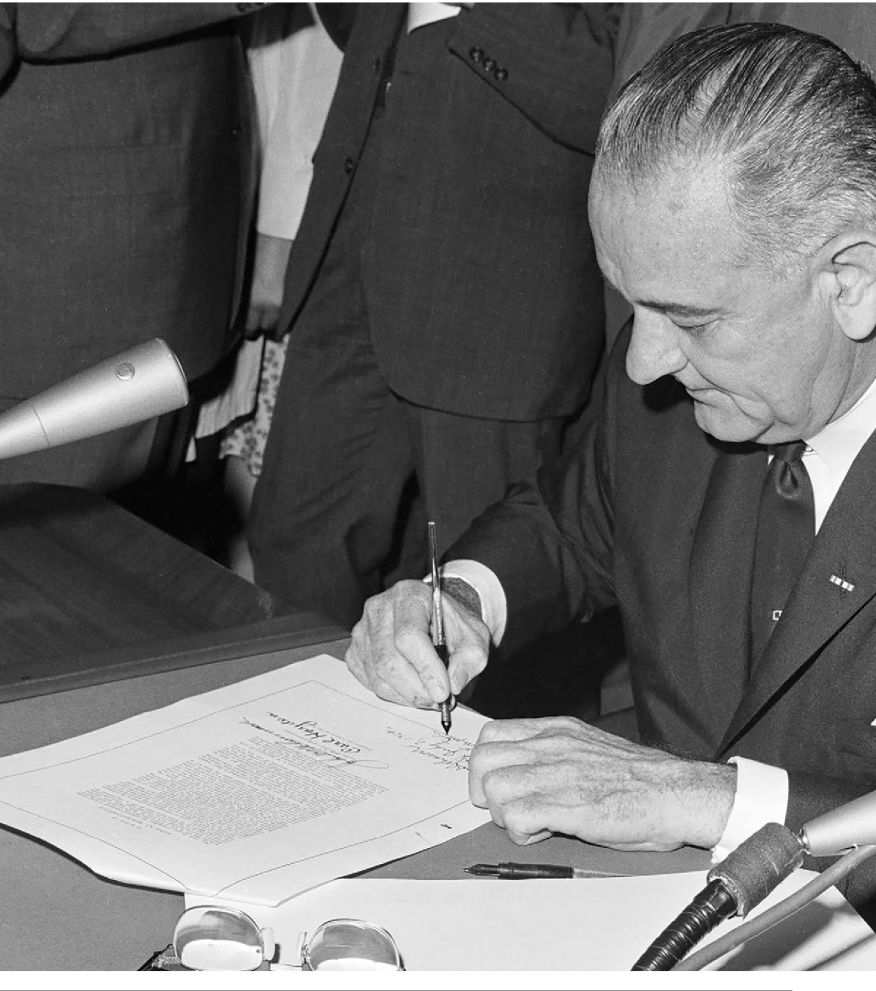
President Lyndon B. Johnson signs the Civil Rights Act of 1964 to create a legal framework for outlawing employment, housing, and voting discrimination based on race, color, sex, national origin, and religion.
Font size:
Interval:
Bookmark:
Similar books «The Gay Liberation Movement: Before and After Stonewall»
Look at similar books to The Gay Liberation Movement: Before and After Stonewall. We have selected literature similar in name and meaning in the hope of providing readers with more options to find new, interesting, not yet read works.
Discussion, reviews of the book The Gay Liberation Movement: Before and After Stonewall and just readers' own opinions. Leave your comments, write what you think about the work, its meaning or the main characters. Specify what exactly you liked and what you didn't like, and why you think so.



